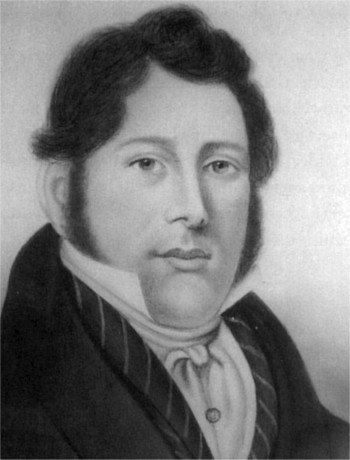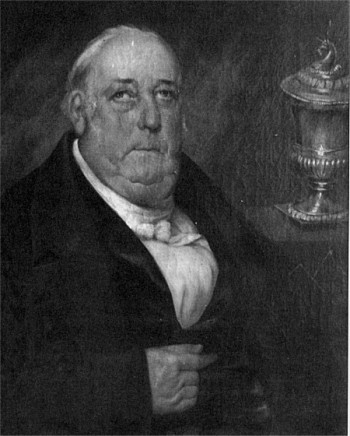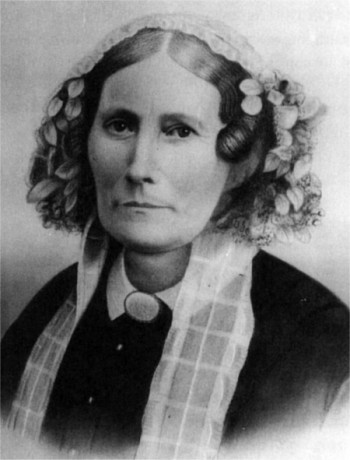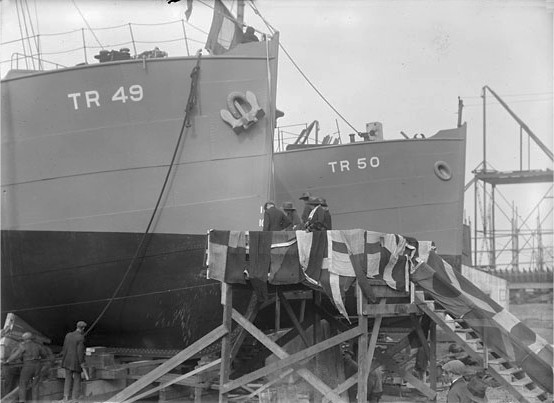Davie – a short history and links to more details

The Davie shipyards, under various names, locations and owners, are the oldest shipbuilders still retaining their founder's name not only in Canada, but in North America. They started in 1825 as George Taylor and Allison Davie Canoterie and continue today as Chantier Davie Canada Inc.
Names (individual and corporate), ownership, and yard sites
Origins
George Taylor (1782-1861), an English shipwright, arrived in Quebec in 1811 and started a yard at Trou St. Patrice on the Île d’Orléans. He became deeply involved in building ships during the War of 1812 on the Great Lakes. He returned to the Île d’Orléans to work independently, moving into new premises in (Lower) Quebec City at St Thomas St and Canoterie St, on the North bank of the St Lawrence in 1919 under the name of George Taylor Canoterie.
Captain Allison Davie (1799-1836), an English mariner, made several voyages to Quebec in the early 1820s, met Elisabeth Johnson Taylor, the only child of George Taylor who insisted that if they were to marry, that Davie must give up seafaring and use the name Taylor for any children so as to perpetuate the family name. Captain Allison Taylor finally agreed and they were married 16 April 1825 and the shipbuilding business became the George Taylor and Allison Davie Canoterie at the Canoterie Street location.

The move to Lauzon, Levis and early growth
On 2 Dec. 1829 Allison Davie bought a waterfront property at the foot of the cliff at Pointe-Lévy on the south shore of the St Lawrence with a view to setting up his enterprise there. He purchased another site on 28 December the following year. On these lots he put up the facilities needed for repairing ships. But, as the Quebec Gazette reported on 5 March 1832, during the violent spring break-up "the large wharf" of his shipyard, "after being thrown over by the ice, was carried down the river." Undaunted by the disaster, Davie started over again with such energy that by autumn he had the Pointe Levis Patent Slip back in operation as George T. Davie and Allison Davie (Lévis), operational from 1832 to 1855, using the name of George Taylor Davie (1828-1907), grandson of George Taylor and son of Allison and Elizabeth Davie.

This yard was mostly involved in ship repair, a lot of it "wrecking" or rebuilding salvaged ships, with only two new ships being built there. After the accidental drowning death of Allison Davie in 1836, the yard was managed by Elizabeth Davie who was also taking care of her ailing father and eight children. In 1850, George T. Davie returned to the family yard, after his apprenticeship and employment as yard manager at the John Munn shipyard, to manage the yard alongside his brother Allison (1829-1867.)
From 1855 to 1887, the yard again changed name to George T. Davie (Lévis.) This yard again was mostly involved with repair work and rebuilding salvaged ships, but there was an upturn in orders for new ships, and 15 new vessels are recorded.
The move to Lauzon
By the 1880s, metal-hulled ships limited Davie's capabilities; their yard was too small and they lacked proper equipment for more than minor repairs. A few unprofitable contracts, and buying out some of his siblings led to George T. Davie lacking capital for expansion. However, serendipity came his way; the government built the the Lorne Dry Dock at Lauzon (Lévis), some 2.5 km (1.5 miles) along the coast to the north-west; part of his property was expropriated to railway rights; and in 1882 he was able to buy from his mother-in law some 100 acres of land next to the Lorne Dry Dock already equipped by his father-in law, Duncan Patton, with a saw mill and two building slips. In 1886, Davie salvaged, then bought for repair and resale the iron steamer Titania, found skilled workers from England who started training his local workforce, and the government waived the rental fees for the Lorne facility... However, he continued to use the Lévis yard for repairing and wintering smaller vessels.
Thus this yard, operational for repairing ships of growing sizes from 1887 onwards by the brothers Allison and George T. Davie, finally expanded into new construction on 4 April 1897 as George T. Davie and Sons (St Joseph, Lauzon). The yard numbers 1-14 represent the start of recorded hull numbers. The partners and managers were John Leavitt Davie (1868-195), Allison Cufaude Davie (1870-1951) and George Duncan Davie (1873-1937).

In 1914, this company needed working capital, and was sold to Charles A. Barnard, K.C. who, perhaps behaving in an unexpected manner towards the Davie's, transferred four fifths of his shares to the British Maritime Trust Limited; the company was renamed as Davie Shipbuilding & Repairing in 1914 and continued the "George T. Davie and Sons" yard numbering with Hull nos. 15-591. The president from 1914 to 1916 was George D. Davie. By 1920, the company was controlled by Canada Steamships Lines (C.S.L.) who were themselves owned by the British Maritime Trust Limited; three years later, in January 1925, it went into liquidation, was bought outright by C.S.L. and continued to operate as Davie Shipbuilding and Repairing Company, only adding 'Limited' to the corporate name.
However, in parallel, and so as to preserve family interests, a separate yard Geo. T. Davie and Sons (Lauzon) (became "Ltd." in 1942), adjoining the main yard owned by C.S.L., was started in 1929 by several members of the Davie family, after Davie Shipbuilding was sold to Canada Steamship Lines. It was originally a small-vessel repair yard but it expanded into new construction in 1934. During the war years, employment rose from fewer than 100 workers to over 2,000. In 1961 it was sold to Canadian Vickers but was sold back to Davie Shipbuilding in 1967 and shortly thereafter (1968) it was integrated with the bigger yard. During its lifetime, this yard produced Hull nos. 1-108. The George T. Davie and Sons yard - known as Wee Davie - was immediately next door to Davie Shipbuilding & Repairing - known as Big Davie.
In 1933, the Lévis yard separated from the one in Lauzon and Allison Cufaude Davie (1870-1951) remained the owner until his death in 1951. His great-nephew Mr. Bossé inherited it, but he sold it to Paul Gourdeau the same year under the name Davie Brothers Limited, starting a new yard numbering system with hull nos. 1-96.. Sold in 1971 to Agence Maritime Incorporée, the company merged with Logistect Corporation, a coastal shipping operator, to take the title of A.C. Davie Incorporé, and in 1977, after Loi 101 made French the official language of Québec, the name was changed to Les Industries A. C. Davie, but continued the operations of Davie Brothers Limitée with hull nos. 97-126. In 1987 it was sold to Equimer (associated with AMT Marine Incorporé), a French marine equipment manufacturer, but closed its doors in 1989.
This year marked the end of Davie operations at Pointe-Lévis. Since 2003, the site has been managed, with seasonal opening, as the Davie Shipyard National Historic Site of Canada.

In 1952, Davie Shipbuilding and Repairing Company was renamed Davie Shipbuilding Limited which was operational until September 1975. This yard continued the Davie Shipbuilding and Repairing Company yard numbering system with hull nos. 592-687.
Another renaming of the Lauzon yard took place in December 1975. The new "name" Les Chantiers Davie Limitée — Davie Shipbuilding Limited was operational until 1983, and continued the previous yard numbering system used by Davie Shipbuilding Limited with hull nos. 688-709.
In 1976, Power Corporation, the owners of CSL, sold Davie Shipbuilding & Repairing to Société de Construction Navale, (Soconav), which had been established for this purpose by four employees of Marine Industries Ltée, with the financial backing of the Quebec Government’s Societé Générale de Financement, (SGF). In 1981, the company was sold to Dome Petroleum, and in 1984 it was sold to Versatile Corporation (the sale was completed first quarter 1985), and the name changed to Versatile Davie Inc., with Donald W. Challinor named president and CEO. Versatile Davie was operational from 1984 to 1985, again continuing the previous yard numbering system with hull nos. 710-711.
In 1987 it was sold to Marine Industries Ltd (MIL) and became Mil Davie Inc.; the yard was operational from 1989 until 1992, yet again continuing the previous yard numbering system with hull nos. 712-715. [Note: see also the build records for the parent company MIL (Marine Industries Ltd).
Moving into the twentieth century
In 1991, the federal and provincial governments assisted MIL Davie with a $300 million aid package. However, in 1996 the Quebec government took over the yard and sold it to Dominion Bridge for $1 – and the name changed to Davie Industries, Inc. Dominion Bridge put itself under bankruptcy protection in 1998 after an international consortium defaulted on a $32-million payment for the construction of two offshore drilling rigs and the Quebec government refused to provide another aid package. It was sold again in 2000 and became Industries Davie, Ltd. In 2001, Davie declared bankruptcy and went into the hands of a court-appointed trustee.
May 20, 2006, the Montreal Gazette reported: "Bankrupt for the past 4½ years, Canada's oldest and most illustrious shipyard is now a ghost town run by a skeleton crew." The shipyard was however sold to Teco Maritime ASA of Norway and renamed Davie Yards Incorporated. TECO sought financial protection from its creditors in early 2010. Investissement Québec held $28 million in share capital, so Davie effectively became a Crown corporation. SNC Lavalin became involved but 31 May 2012, Radio France reported that: "la vice-présidente aux communications de SNC, Leslie Quinton, a indiqué que l'entreprise montréalaise avait « pris la décision difficile de mettre fin à sa participation au sein de la coentreprise Davie » (an SNC Lavalin VP announced the difficult decision to terminate their co-ownership.)
In 2006, it was sold to Norwegian interests and became Davie Yards, Inc. In 2010, it was sold to a joint venture of CECON and Upper Lakes Group, who eventually (after a series of negotiations, sold out in November 2012 to British owned Zafiro Marine Industries in Monaco, now London based Inocea. The yard was renamed Chantier Davie Canada, Inc. and has been operational from 2012 to the present day.
On April 4, 2023, Chantier Davie was formally admitted as third strategic partner of Canada’s National Shipbuilding Strategy. As reported by Maritime Magazine, Alex Vicefield, Chairman and CEO of Inocea Group, stated "Davie has set “new shipbuilding standards in the last 10 years ... In 2012, we took over a sleeping giant, and transformed Davie into a world class facility, as illustrated by its on-budget, on-time conversion of a containership into a combat support vessel, the Asterix, for the Canadian navy." James Davies, President and CEO, Chantier Davie Canada Inc., was also enthusiastic "This historic agreement puts the 'National' in National Shipbuilding Strategy. The federal government deserves much credit. Together, we will bridge a strategic shipbuilding gap and create guaranteed capacity for future fleet renewal at Canada’s largest shipbuilder."
Other resources
Sources
- A Bridge of Ships, James Pritchard, Montreal : McGill-Queen's University Press, 2011
- Tall ships and tankers, Eileen Reid Marcil, Toronto : McClelland & Stewart, 1997.
- La construction des navires à Québec et ses environs, Narcisse Rosa, Québec : Impr. L. Brousseau, 1897
- Tim Colton, to whom credit is due for most of the data available in our "shipyard tables" and the inspiration to review and improve many data entries in our Ships Database.
- Archival files and binders, Donald S. Jones.
- Archival files and binders, Edwin Chan.
- More to come...
